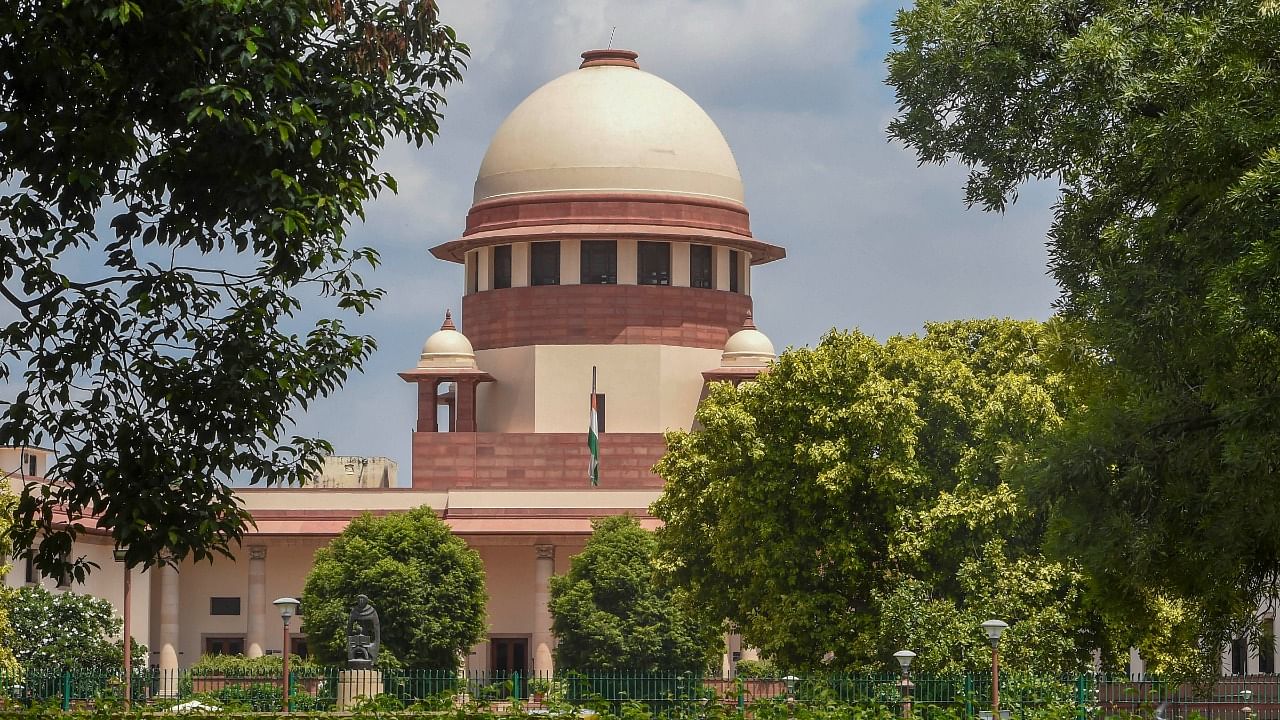
The hand can also be a “weapon” by itself where a boxer, wrestler, cricketer, or an extremely physically fit person inflicts a blow, the Supreme Court said on Thursday while imposing a sentence of one-year rigorous imprisonment on cricketer-turned-politician Navjot Singh Sidhu in a 1988 road rage case.
The apex court said the blow inflicted, in this case, was not on a person identically physically placed but a 65-year-old man, who was more than double the age of the then cricketer at that time, and Sidhu cannot say that he did not know the effect of the blow or plead ignorance on this aspect.
“The hand can also be a weapon by itself where say a boxer, a wrestler or a cricketer or an extremely physically fit person inflicts the same. This may be understood where a blow may be given either by a physically fit person or to a more aged person,” a bench of Justices A M Khanwilkar and S K Kaul said in its 24-page judgement.
It noted that insofar as the injury caused is concerned, the top court has accepted the plea of a single blow by hand being given on the head of the deceased.
“In our view, it is this significance which is an error apparent on the face of the record needing some remedial action,” the bench said while allowing the review plea filed by the complainant on the issue of the sentence awarded to Sidhu by the top court in May 2018.
Though the apex court had in May 2018 held Sidhu guilty of the offence of "voluntarily causing hurt" to a 65-year-old man, it spared him a jail term and imposed a fine of Rs 1,000.
The bench, which referred to an earlier verdict of the apex court, noted if the courts do not protect the injured, the injured would then resort to private vengeance and, therefore, it is the duty of every court to award a proper sentence having regard to the nature of the offence and the manner in which it was executed or committed.
It noted that criminal jurisprudence, with the passage of time, has laid emphasis on victimology which fundamentally is a perception of a trial from the viewpoint of the criminal as well as the victim.
“No doubt there cannot be a straitjacket formula nor a solvable theory in mathematical exactitude. An offender cannot be allowed to be treated with leniency solely on the ground of discretion vested in a court,” the bench said.
It also referred to the April 18 verdict by which the top court had cancelled the bail granted to Ashish Mishra, son of Union minister Ajay Mishra, in the Lakhimpur Kheri violence case and asked him to surrender in a week.
“What is relevant for us to note is that the victim being the de facto sufferer of a crime had no participation in the adjudicatory process. The current ethos of criminal justice dispensation to prevent and punish crime had surreptitiously turned its back on the victim,” the bench said.
It said in the present case, that at every stage the victim has been heard.
The bench said, “Thus, when a 25-year-old man, who was an international cricketer, assaults a man more than twice his age and inflicts, even with his bare hands, a severe blow on his (victim’s) head, the unintended consequence of harm would still be properly attributable to him as it was reasonably foreseeable”.
It said among the factors to be taken note of is the “defenceless and unprotected state of the victim” appropriate in the facts of the present case.
It noted that in one of the verdicts, the US Supreme Court had also moved in the same direction while examining the aspect of the “victim impact statement” in a case of capital offence at the time of sentencing.
The bench noted that a disproportionately light punishment “humiliates and frustrates” a victim of crime when the offender goes unpunished or is let off with a relatively minor punishment as the “system pays no attention to the injured’s feelings”.
It said the aspects of sentencing and victimology are reflected in ancient wisdom which means: ‘The person dispensing justice as per Dharmashastra should prescribe a penance appropriate to the age, the time and strength of the sinner, the penance being such that he may not lose his life and yet he may be purified. A penance causing distress should not be prescribed.’
“It is a case where some germane facts for sentencing appear to have been lost sight of while imposing only a fine on respondent No.1 (Sidhu) and, therefore, no question of choosing between two possible views arises,” the court said.
The bench also dealt with the submission of the complainant’s counsel on expanding the scope of the review application.
“On analysis of the aforesaid aspect, we are disinclined to enlarge the notice to something more than the aspect of sentencing,” it said.
In September 2018, the apex court had agreed to examine the review petition filed by the family members of the deceased and had issued the notice, restricted to the quantum of sentence.
According to the prosecution, Sidhu and Sandhu were in a Gypsy parked in the middle of a road near the Sheranwala Gate Crossing in Patiala on December 27, 1988, when the victim and two others were on their way to the bank to withdraw money.
When they reached the crossing, it was alleged, that Gurnam Singh, driving a Maruti car, found the Gypsy in the middle of the road and asked the occupants, Sidhu and Sandhu, to remove it. This led to heated exchanges.